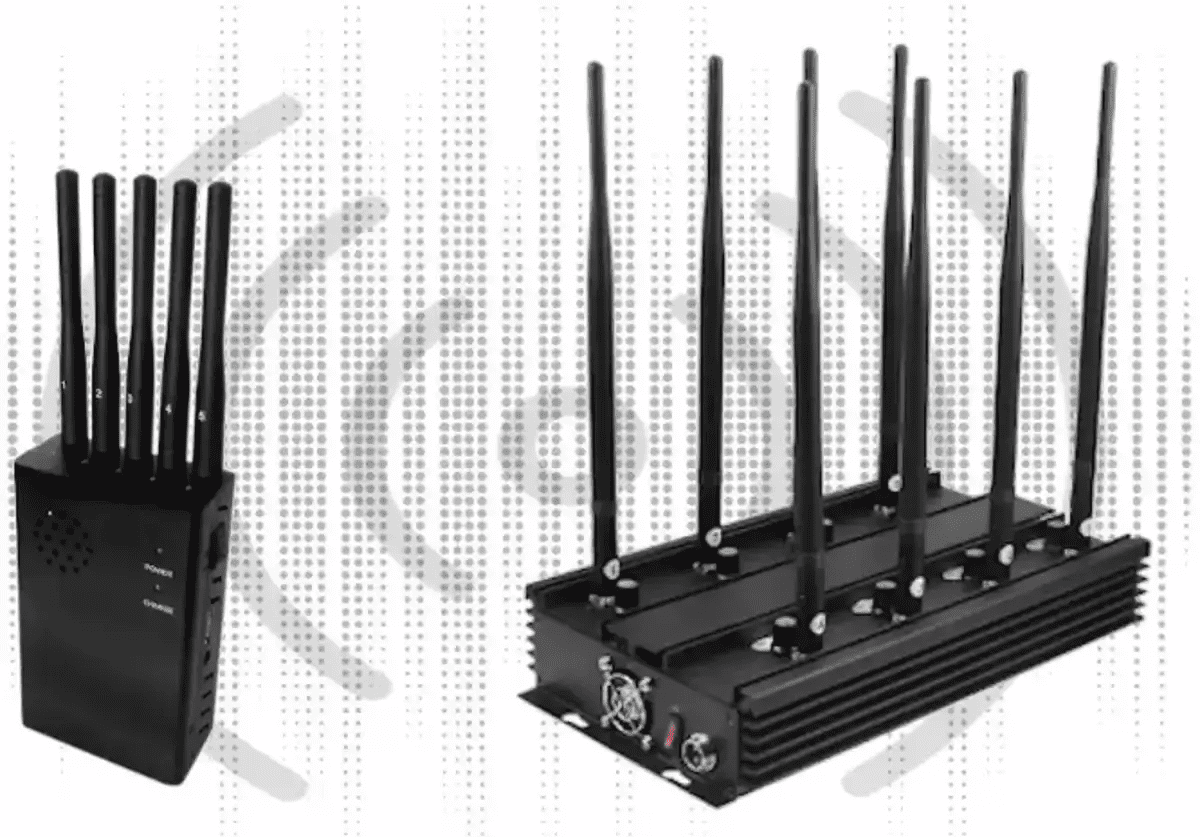Wireless technology has made our society more dependent. We get up every morning to check our email or Facebook over WiFi, then we unlock our cars with key fobs in our pockets and make calls to our friends or colleagues. We rely on GPS for directions when we travel. LoJack and wireless AirTags can help locate lost or stolen items. Wireless communication is a key component of the civilian and military infrastructure. These signals are susceptible to signal jammers, which is a type of wireless device that can block them.
How do Signal Jammers work?
Jammers simply disrupt wireless signals by creating noise that drowns them out. A jammer is able to interfere with nearby receivers by tuning it to a particular frequency range and blasting high-power noises, tones, or pulses. This was traditionally used to disrupt radio communications. However, the same principle can be applied to all types of wireless signals, including cellular, WiFi, and Bluetooth. The jammer range of a device varies depending on its power and size. A small handheld jammer may be effective for a distance of 100m or less in urban environments, while a large military-grade jammer can reach hundreds of miles over open terrain.
Military Use Of Signal Jammers
The popularity of jammers grew during the Cold War era. They were used extensively in WWII when Nazis blocked radio transmissions from occupied Europe. China and the Soviet Union jammed various incoming signals. Cuba blocked American radio stations. North and South Korea jammed their transmissions.
The Russian military still uses signal jammers extensively in electronic warfare (EW). This tech was reportedly used by the Russians to disrupt low-altitude U.S. surveillance aircrafts during the conflict in Syria in 2018. It’s not clear if this resulted in them crashing or simply veering off course. Russia also used powerful jammers to disrupt the Latvian phone system and cause a loss of GPS signal for aircraft operating in the region.
Jammers are a popular tool for Mexican drug cartels. They appear to be in harmony with another piece of tech that the cartels have adopted, aerial drones.
Small commercially-available drones have been used to surveil territory, especially at night, with the aid of thermal cameras. These drones can also be used to drop explosives onto targets. This tactic has been previously used by ISIS and other terrorist groups in the Middle East. The cartel members were seen carrying man-portable signal jammers, which can be used to disrupt nearby drone uplinks and radio comms.
The Black Market
You may think, “I am not a high-value target military or part of a warring cartel of drug dealers, so I shouldn’t have to worry about signal jammers.” But this is not true. Signal jammers can be found online for a low price, are easy to use, and are easily accessible to anyone who knows where to find them. Check it out here. You can have a significant impact on your life. Tiny Transmitters, a veteran-owned manufacturer of surveillance gear, posted some amazing demonstrations on Instagram to show this.
They shot a video to show how a portable jammer can tune to the frequency of your car keyfob and block its signal with a flip of a switch. A thief could see you parking your car and turn on the jammer to block the fob’s signal, thereby preventing your car from locking. Unless there was a click or flashing light from the vehicle, it would be assumed that the lock is on. If this happens, the criminal can steal valuables inside the car, or take the car.
Another video shows how a jammer is used to interdict a wireless doorbell camera’s ability to communicate with the WiFi network. The camera will not transmit footage to cloud servers or notify the homeowner when someone is at the door unless it has a hardwired connection, unlike many Ring, Wyze, Wyze, Wyze, and Nest doorbell cameras. Tiny Transmitters says, “As you might guess, an all-wireless household alarm system can have a frightening flaw. The wireless signal can be jammed.”
Wireless signal jammers can also be used to block cell phone calls and disable GPS tracking devices. Although these uses are illegal, criminals will not hesitate to violate laws and FCC regulations.
Final Thoughts
We are not telling you to give up WiFi or ditch your phone. However, wireless devices can be extremely useful in emergency situations. It’s important to consider the potential dangers of wireless devices and to take precautions to ensure your safety and that your belongings are safe.



































